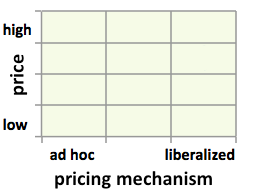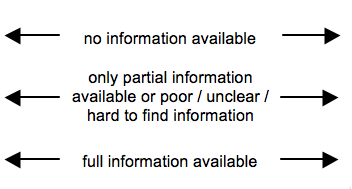Knowledge fuels change - Support energypedia!
For over 10 years, energypedia has been connecting energy experts around the world — helping them share knowledge, learn from each other, and accelerate the global energy transition.
Today, we ask for your support to keep this platform free and accessible to all.
Even a small contribution makes a big difference! If just 10–20% of our 60,000+ monthly visitors donated the equivalent of a cup of coffee — €5 — Energypedia would be fully funded for a whole year.
Is the knowledge you’ve gained through Energypedia this year worth €5 or more?
Your donation keeps the platform running, helps us create new knowledge products, and contributes directly to achieving SDG 7.
Thank you for your support, your donation, big or small, truly matters!
Difference between revisions of "Fuel Prices Yemen"
***** (***** | *****) m (Protected "Fuel Prices Yemen" ([edit=sysop] (indefinite) [move=sysop] (indefinite)) [cascading]) |
***** (***** | *****) |
||
| Line 1: | Line 1: | ||
{{Fuel Price Factsheet | {{Fuel Price Factsheet | ||
|Fuel Price Country=Yemen | |Fuel Price Country=Yemen | ||
| + | |Fuel Pricing Policies=Yemen adopts a system of ad hoc price changes with high subsidies. Under pressure to reform subsidy system due to dwindling oil resources and high budget deficits with several price changes already taking place in 2010. Reforms encouraged and supported by the IMF and World Bank. | ||
| + | |||
| + | Status as of 30.9.2010 | ||
| + | |||
| + | "Government controls, subsidizes, and infrequently adjusts fuel prices. In 2011, regular gasoline was withdrawn from the market, leaving only super gasoline priced at 175 rial (US$0.82) a liter. In Apr 2012, super gasoline was withdrawn from the market and regular gasoline, previously priced at 75 rial a liter, was re-introduced at 125 rial (US$0.58). After the price of diesel doubled in Apr 2012, farmers protested by blocking roads. In 2005, government started reforming fuel price subsidies, but reduced price increases after dozens of people were killed and numerous were wounded in riots. Fuel subsidies reached 14% of GDP in 2008." (Source: Kojima, Masami. (2013, forthcoming). “Petroleum product pricing and complementary policies:Experience of 65 developing countries since 2009.” Washington DC: World Bank.) | ||
|Fuel Currency=YER | |Fuel Currency=YER | ||
|Fuel Price Exchange Rate=213.3 | |Fuel Price Exchange Rate=213.3 | ||
|Fuel Price Exchange Rate Date=2010/11/17 | |Fuel Price Exchange Rate Date=2010/11/17 | ||
| − | |||
| − | |||
|Fuel Price Composition Annotation=No information available. | |Fuel Price Composition Annotation=No information available. | ||
| − | |Fuel Pricing | + | |Fuel Matrix Pricing Mechanism=1 |
| − | |||
| − | |||
|Fuel Matrix Price Level=1 | |Fuel Matrix Price Level=1 | ||
| − | |||
|Fuel Transparency Price Composition=1 | |Fuel Transparency Price Composition=1 | ||
|Fuel Transparency Pricing Mechanism=1 | |Fuel Transparency Pricing Mechanism=1 | ||
}} | }} | ||
Revision as of 19:38, 8 February 2013
Part of: GIZ International Fuel Price database
Also see: Yemen Energy Situation
Fuel Pricing Policies
| Local Currency: | YER |
| Exchange Rate: | 213.3
|
| Last Update: |
Yemen adopts a system of ad hoc price changes with high subsidies. Under pressure to reform subsidy system due to dwindling oil resources and high budget deficits with several price changes already taking place in 2010. Reforms encouraged and supported by the IMF and World Bank.
Status as of 30.9.2010
"Government controls, subsidizes, and infrequently adjusts fuel prices. In 2011, regular gasoline was withdrawn from the market, leaving only super gasoline priced at 175 rial (US$0.82) a liter. In Apr 2012, super gasoline was withdrawn from the market and regular gasoline, previously priced at 75 rial a liter, was re-introduced at 125 rial (US$0.58). After the price of diesel doubled in Apr 2012, farmers protested by blocking roads. In 2005, government started reforming fuel price subsidies, but reduced price increases after dozens of people were killed and numerous were wounded in riots. Fuel subsidies reached 14% of GDP in 2008." (Source: Kojima, Masami. (2013, forthcoming). “Petroleum product pricing and complementary policies:Experience of 65 developing countries since 2009.” Washington DC: World Bank.)
Fuel Prices and Trends
| Gasoline 95 Octane | Diesel | |
|---|---|---|
| in USD* |
|
|
| in Local Currency |
|
|
* benchmark lines: green=US price; grey=price in Spain; red=price of Crude Oil
Fuel Price Composition
Price composition.
No information available.
At a Glance
| Regulation-Price-Matrix |
| ||||
 |

|

|

| ||
Sources to the Public
Contact
Please find more information on GIZ International Fuel Price Database and http://www.giz.de/fuelprices



















